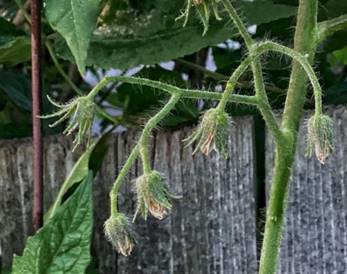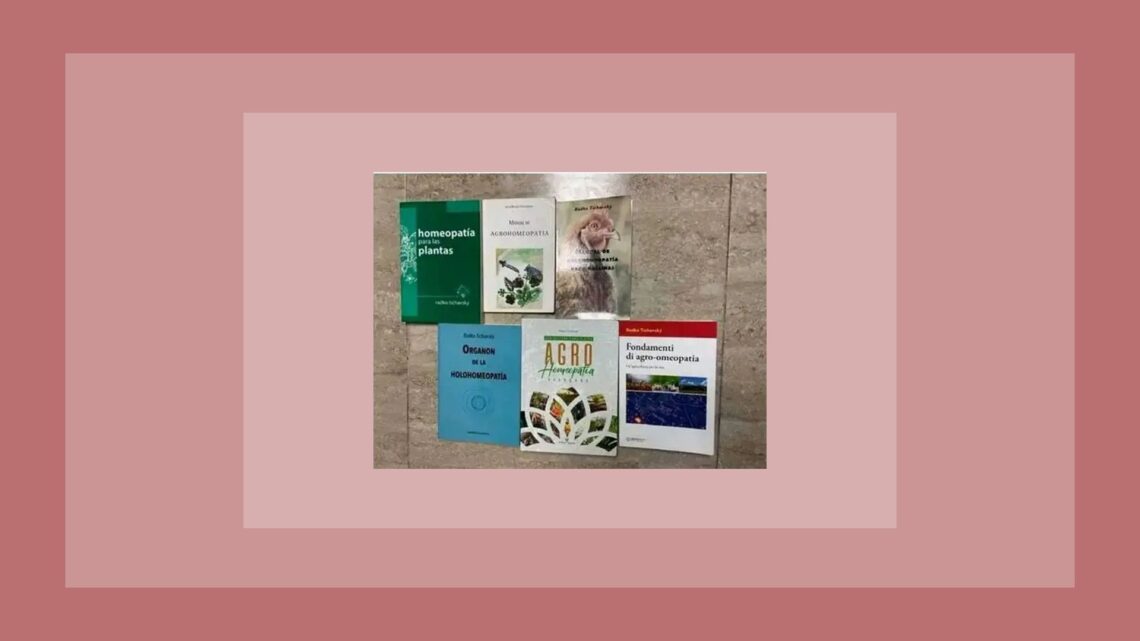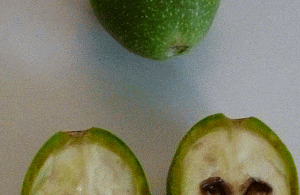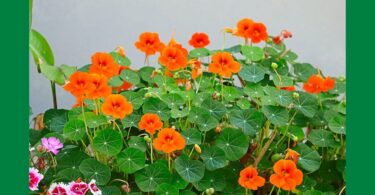Editor’s Note: “JT potency” (Jenichen / Tichavsky) is a centesimal dilution followed by 500 succussions or five hundred continuous turns with a wooden stick to the right and 500 turns to the left (if handling larger volumes). The JT potency frequently has a better reaction in plants and it is very important in preparation of live bionosodes.
Dear Dr. Tichavsky,
I’m very new to using homeopathy on plants and I’m looking for a remedy that might help for the bugs attacking my zucchini and other summer squashes. The bugs are considered squash bugs. They are gray and get about the size of a thumbnail sometimes larger and if a whole nest of them hatches before I can find them the plants will be decimated in less than a week. If there is a remedy for it, I would greatly appreciate that! I’m only an hour away from Kansas, city, U.S. I’m in zone 7.
Thank you
Sasha Keyes
Radko Tichavsky:
Dear Sasha,
The most commonly used remedies are Allium sativum 4 JT, Azadirachta indica 4 JT (dynamized from neem oil), Chrysanthemum 4 JT (from hydroalcoholic mother tincture of the plant’s flowers).
You can also use beneficial nematodes such as species of the genera Steinernema and Heterorhabditis which are readily available.
Anasa tristis also has some natural enemies such as assassin bugs of the family Reduviidae, Tachinid parasitoids such as Trichopoda pennipes, Chrysopa spp. and Chrisoperlas spp., spiders (Misumena spp. for example).
My suggestion is that you not only think about remedies, but also how to expand the biodiversity in the orchard, this will help to attract natural enemies to the zucchini crop, and as a principle not to plant zucchinis in the same place, alternating different crops in different parts of your orchard.
You can also review my previous columns where I address the problem of Anata tristis in the column of September 2019, February 2022, December 2022, and June 2023, are still valid.
Dear Radko,
Thank you for all the advice you so generously share – I have successfully treated aphids and caterpillar infestations using your knowledge. I have an allotment in London, UK which has regular deliveries of horse manure from Buckingham Palace stables. Over the past few years, we have noticed that some of our crops are suffering from distorted leaves, fruits, low yields and the plants are spindly and failing to thrive despite initially being healthy seedlings. We always rot the manure for 12 months before use, and in my case, it is part of a layering system with plant matter and spent soil from the greenhouse.
We believe that the reason for the distorted crops is Aminopyralid – a weedkiller that farmers use to control broadleaved plants in fields which are then used for grazing or cut down for hay. This product has now been banned in relation to grazing of horses. However, they can still eat contaminated hay.
I wondered if you have a suggestion.
Thank you
Dodo Kitching – MA RShom
Radko Tichavsky:
Dear Dodo,
The aminopyralid, being a synthetic auxin, mimics the action of natural plant auxins. Auxins are plant hormones that regulate a variety of processes in plant growth and development.
When applied in high doses, as in the case of the use of aminopyralid as an herbicide, it can cause uncontrolled and abnormal growth.
Typical symptoms of aminopyralid damage in sensitive plants include:
- Twisted or curled new shoots.
- Young leaves take on a concave or cupped shape.
- Affected plants show stunted growth.
- Roots develop abnormally.
- Leaves are yellow, chlorotic or show signs of scorching.
- Plants abort flowers or fruits before they are fully developed.
There are several ways to eliminate aminopyralid. The simplest is through the application of peroxidases, which are proteinic enzymes found in various plants and also in fungi such as Trametes versicolor which is a small wood-decomposing fungus very common in dead logs, but is also found parasitizing living woody species.
Trametes versicolor contains lignin peroxidase (LiP), manganese peroxidase (MnP) and laccase, but also monooxygenases, dioxygenases, esterases, and other types of hydrolases that together remove aminopyralid residues.
As a condition for this to happen there must be a balance between the amount of nitrogen and carbon so that the enzymes in charge of destroying aminopyralid are not inhibited. You can form a compost with the received manure by adding charcoal and grass or other dried leaves in a balanced ratio of N/C.
Once the compost bed is formed, prepare a hydrolate of Trametes versicolor fructifications by liquefying the fructifications cut in small pieces in non-chlorinated water with the help of a blender.
Filter the content and prepare a low potency 3-4 JT dynamization according to the amount of liquid you need, also in non-chlorinated water. And with this homeopathic preparation you will water your compost once a week for a month.
It is important to note that this type of compost should only be applied on herbal species (not trees or shrubs) because they will contain multiple spores of the decomposer fungus.
In case you need a spore-free pre-preparation, after filtering the resulting liquid from the blender with a coffee filter for example, you have to pass it again through a finer filter with a suitable pore size, such as 0.45 µm or smaller. The rest of the protocol will remain the same.
Hello Plant Doctor,
I am a retired engineer doing ‘Native Cow Based Spiritual/Natural Farming’ at two farms on the South East of India coast. This is to produce chemical free farm products. I am very keen to improve the soil by nutrients for improving immunity as well as yield of produce.
1) 10 acres Mango Farm consists of 250 grown-up mango trees, and other fruit plants, as intercrops, say around 300, turmeric & Ginger
2) 6 acres Rice paddy field with fruit plants as inter crops.
We have weeds in the rice paddy plantation. They grow faster and consume much of nutrients. We have to physically remove them. It is a laborious and time-consuming task. Is there any possibility to prevent or to kill them with homeopathy?
Location: South-East Coast of India. Latitude : 18.1072652 , Longitude : 83.2090133 Temp. Range- 22 Deg ‘C to 42 Deg ‘C. Average Rainfall is 1,000 MM. Is it possible to recommend homeopathic medicine for improvement?
Thank you
Sonthy S. Murthy – Visakhapatnam, South-East of Indian Coast.
Radko Tichavsky:
Dear Sonthy,
The presence of “weeds” in rice cultivation is a very broad question, for example the most common are Echinochloa spp., Cyperus spp., Scirpus spp., Leptochloa spp. and Ludwigia spp.
Some of them, for example Echinochloa spp. (wild rice) and Leptochloa spp. (water grass), have the ability to mimic the morphology of rice plants as a survival strategy so that after some time of manual uprooting they disguise themselves as rice and become indistinguishable in the crop.
In other words, the behavior of the weeds will depend on the variety of rice you handle and the agricultural management you practice.
One of the strategies of control is the application of Mimosa spp. (prepare a mother tincture of the roots and dynamize to potency 4 JT) or Eucalyptus 4 JT, Helianthus annuus 4 JT, Tagetes 4 JT, Tamarix sp. 4 JT and Sorghum bicolor 4 JT as a pre-emergent soil treatment.
Rotating rice with crops that have strong allelopathic properties (Sorghum app., Zea maydis or Trifolium spp.) can significantly reduce the weed population in future seasons.
Another strategy is to leave residues of rice plants in the soil, which can also reduce weed emergence but may induce rice autotoxicity and reduce subsequent harvests.
It is difficult to determine homeopathic remedies for weeds in rice cultivation in general, as each rice variety has different allelopathic properties, and weeds metabolically accommodate to it producing a kind of coupled response.
It is important to observe in your holon which are the plants that inhibit your weeds and do trials with pre-emergent application. Good candidates are found in trees and shrubs.
Dear Dr. Tichavsky
I garden in Buffalo New York (zip 14221), rainfall is 180 inches for the year temperature is moderate with summer averaging daytime 80 degrees. I just discovered that a large number of my tomato flowers aborted. This occurred in multiple locations. One common factor is that the soil has been mulched for years with ash wood chips. Also, are any plans to produce your Holohomeopathy book in English? I have read your articles for directions that seem to be stated for general purpose. Would you recommend a neutral adjuvant surfactant for applying homeopathy? Would a pure Aloe Vera suit that purpose?

Thank you,
Rodney Galarneau
Radko Tichavsky:
Dear Rodney,
Flower abortion in tomatoes can be due to several factors: excess of water and its irregular supply, lack of macronutrients (NPK), micronutrient deficiency, temperatures higher than 35 degrees Celsius etc.
Ash wood chips improve soil structure and water retention, however, if applied continuously for a long time they can cause nutritional imbalances and allelopathy especially with herbaceous crops.
Wood chips, when continuously decomposing and mixing with the soil, can temporarily lock up nitrogen as they decompose, and imbalance magnesium and calcium, even boron, which together can cause fruiting problems.
Allelopathy problems can occur cumulatively, i.e. in the first years of cultivation few or no problems can be observed and after repeating the same mulching the problems can be accentuated, under the principle of natural antagonism between trees in relation to herbaceous plants such as tomato.
Water retention can be beneficial in sandy soils, in soils that already retain water, excessive mulching with wood chips can cause waterlogging and anaerobic conditions, which can damage roots and cause flower abortion.
My recommendation is to alternate live mulching, for example with alfalfa, trevol, chamomile or calendula and to apply Rosmarinus officinalis 6 JT alternated with Ocymum basilicum 6 JT on the soil to diminish the allelopathic effect of ash chips.
As for Aloe vera, it can serve as a neutral adjuvant, although there is no such thing as a “universal adjuvant”.
The selection of the appropriate adjuvant will depend on the metabolic similarity with the crop plant, the specific properties and the availability in the holon itself.
To mention a few adjuvants, we use Opuntia ficus indica sap, Seratonia silicua seed meal hydrolate, alginates, coconut water, Plantago major seed hydrolate, linseed hydrolate, Salvia officinalis, Saponaria sp. seed extracts and many others
Dear Dr. Tichavsky,
I can see that Equisetum arvense can be used as a remedy, but it is also an almost invasive plant here in Denmark, North Europe. If it is in a garden, it is really hard to manage and takes over larger areas. Is it an indicator of some imbalance? I will appreciate your comment, thank you.
Jeanette
Radko Tichavsky:
Dear Jeanette,
Equisetum arvense is a bioindicator of wet soils with a high water table or poor drainage conditions, acidic soils, anaerobic soils, poor drainage and poor in calcium but especially with the presence of heavy metals (aluminum, nickel, lead, cadmium and zinc) but also manganese.
In general, Equisetum spp. are a bioindicator of disturbed, compacted or recovering soils. Homeopathically, Juglands nigra 4 JT Allium sativum 4 JT or Urtica urens 4 JT can be used, although for a complete bioremediation effect, the specific holon should be repertorized and a specific protocol established.
Hello Dr. Tichavsky
How can I control whitefly in a potato crop in Punjab, India? Punjab has an inland subtropical location, and its climate is continental, being semiarid to subhumid. Summers are very hot. In June, the warmest month, daily temperatures in Ludhiana usually reach about 100 °F (upper 30s C) from a low in the upper 70s F (mid-20s C). Punjab typically receives about 38.43 millimeters (1.51 inches) of precipitation and has 65.65 rainy days (17.99% of the time) annually.
Thank you
Kapil
Radko Tichavsky:
Dear Kapil,
There are many remedies against the whitefly (Bemisia tabacci and Trialeurodes vaporariorum), but perhaps the most effective is a homeopathic preparation of pine resin. First prepare a hydroalcoholic tincture of pine resin, leave it for a week to extract, then dynamize in water at 4 JT power and apply by spray on potato plants.
It is important to keep nitrogen levels low in the potato and apply calcarea carbonica 4 JT to harden the epidermis of the plant. In this way the whitefly will not be able to penetrate the surface of the leaves although there may be a small presence of it. In fact, the whitefly is an important bioindicator of excess nitrogen in the crop, which is why the application of cow manure or nitrogen fertilizers worsens the symptom.
Hi Radko,
Is it really necessary to sterilize the brewers that come from the production of beer that I would like to allocate to the production of mushrooms? If yes, what remedy could I use?
Peppino
Radko Tichavsky:
Dear Peppino,
The reason for sterilizing beer vessels to produce fungi is that brewer’s yeast (Saccharomyces cerevisiae) and yeasts in general are antagonistic to fungi, they slow their growth or even kill them.
Ethyl alcohol above 15% is toxic to brewer’s yeast and kills them. Any substance with pH below 3 and above 9 will kill brewer’s yeast, and also ultraviolet light kills them. Of the homeopathic remedies, you can use Pulsatilla, Sepia Borax, and Sulphur at low potency (6 CH).
BOOKS ON HOLOHOMEOPATHY
Many readers asked about Dr. Radko Tichavsky’s books. Below is a photo of them. They are available in Spanish, Italian and Portuguese. For ordering or information: [email protected]

New Video from Dr. Radko Tichavsky!
In this video, renowned Agrohomeopath Dr. Radko Tichavsky explains Holohomeopathy, the more advanced method of agrohomeopathy: https://youtu.be/GUUoO6Lt-U8 (English subtitles)







Hello Dr Radko
I am really impressed by your vast knowledge on agrohomeopathy..
I am Archana Jhunjhunwala from India Kolkata..
Want some help to make my tea Garden pest free.. and make it totally organic..
.they get infested by loopers Caterpillars & we have to use chemicals..
i want your valuable advice in this regard..
Thanking you
Sincerely yours
Archana Jhunjhunwala